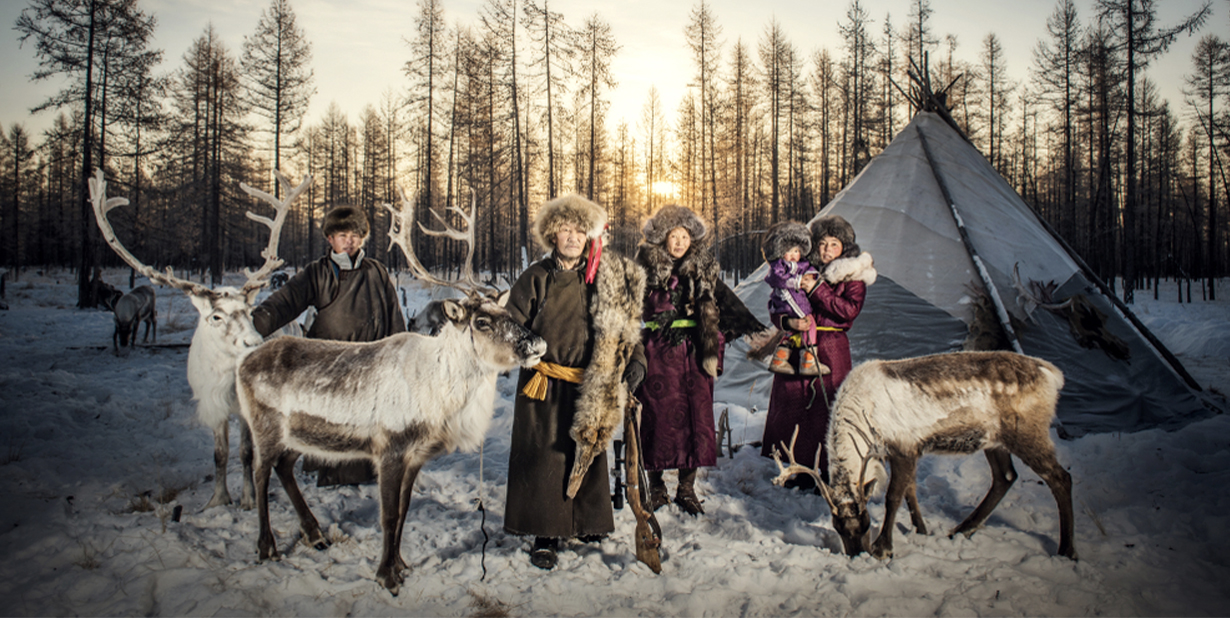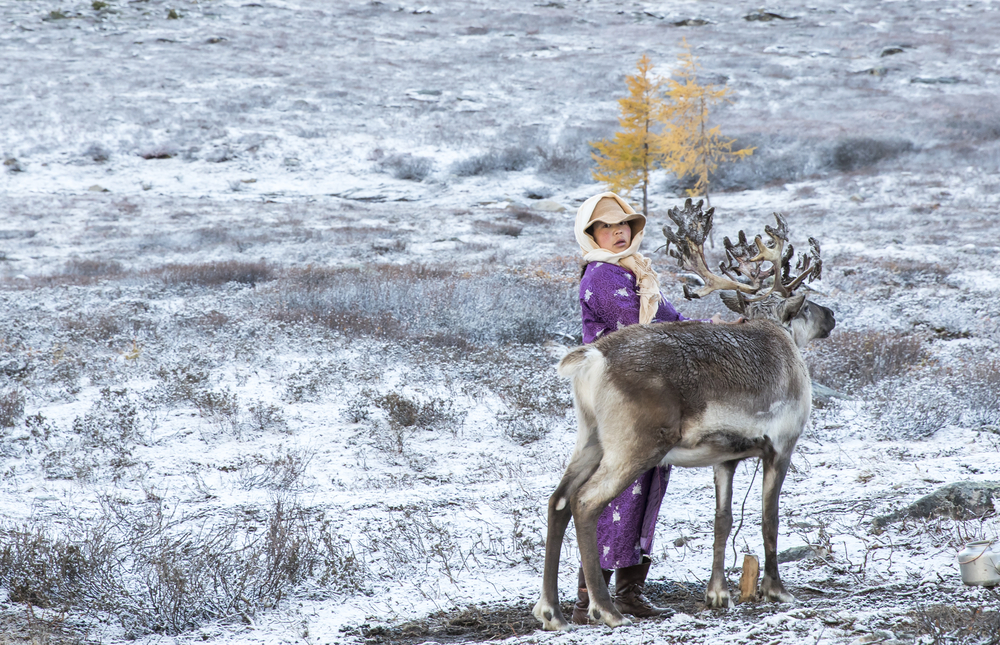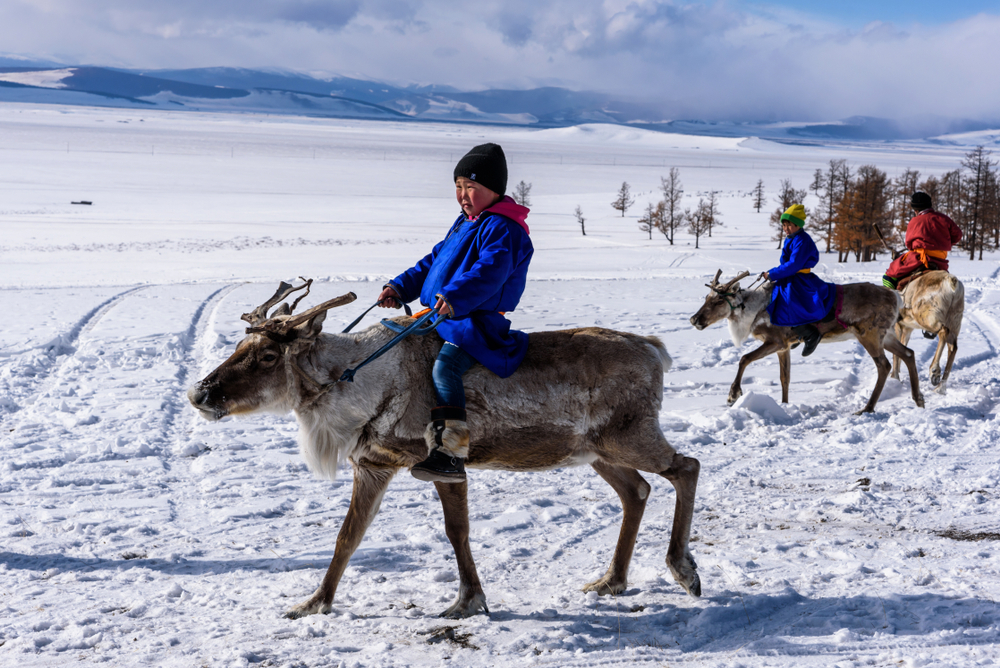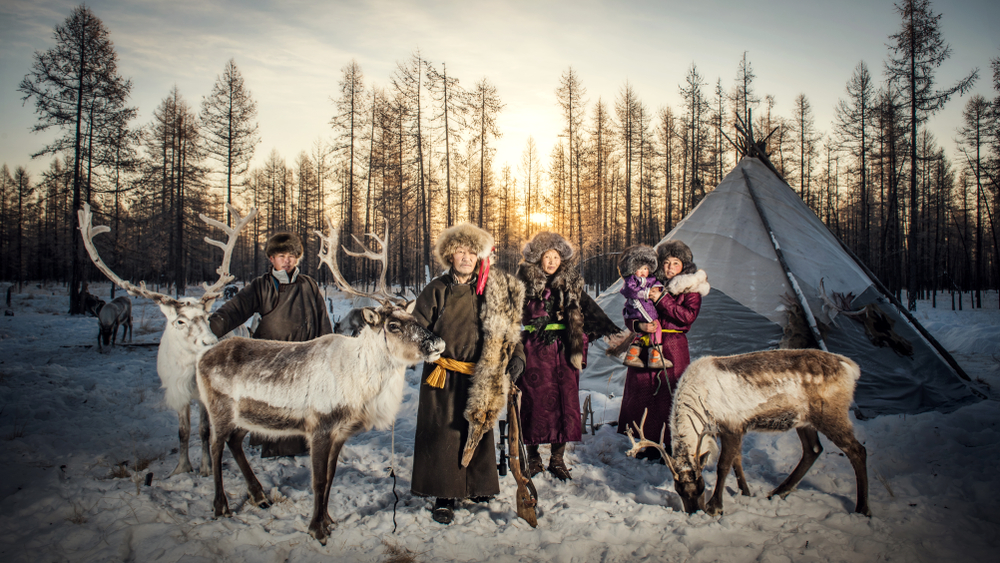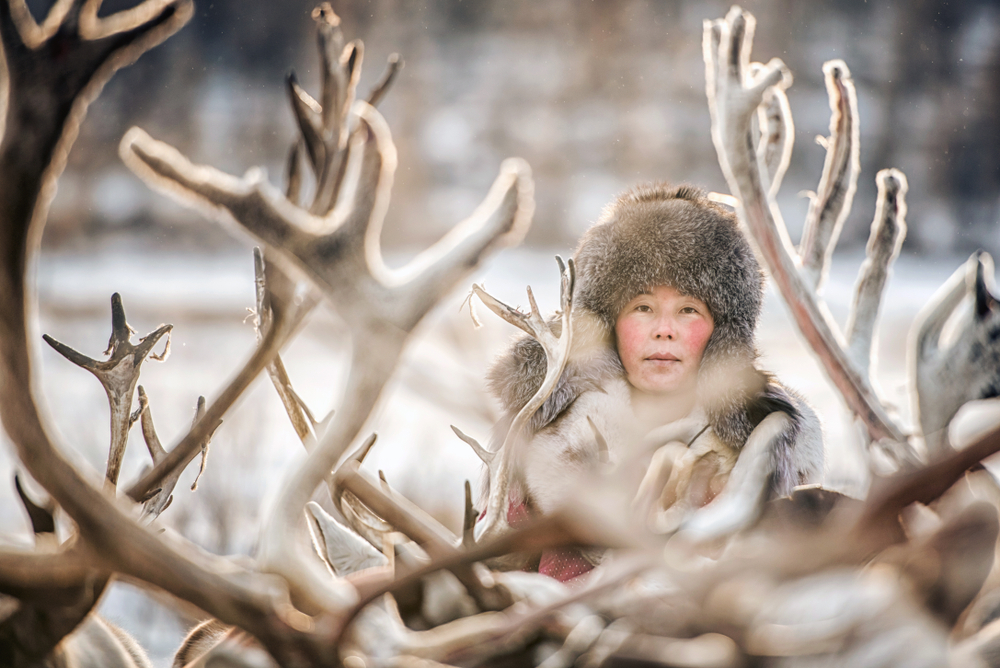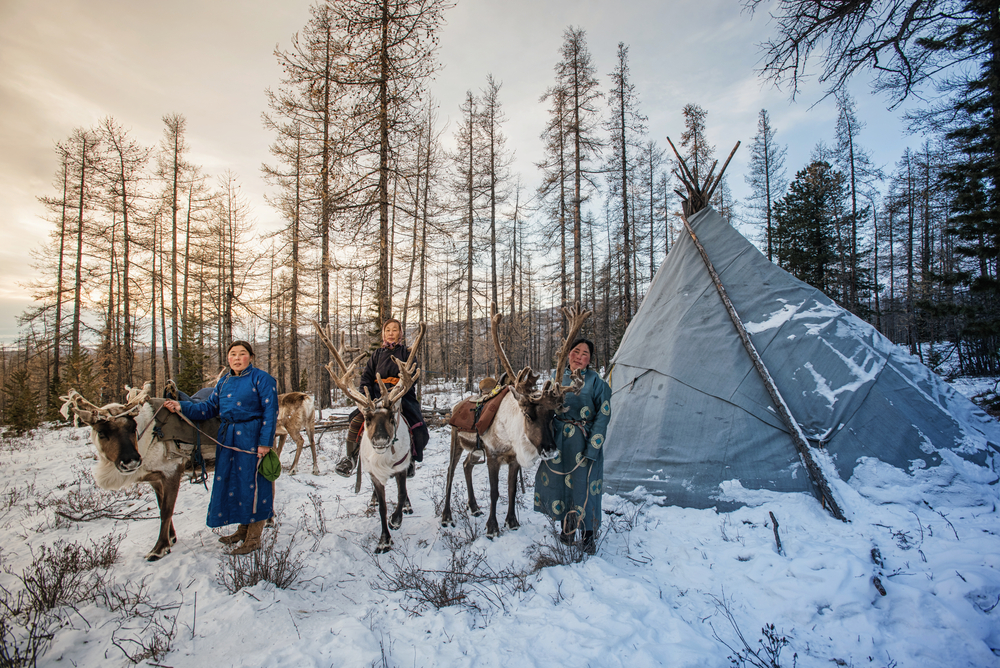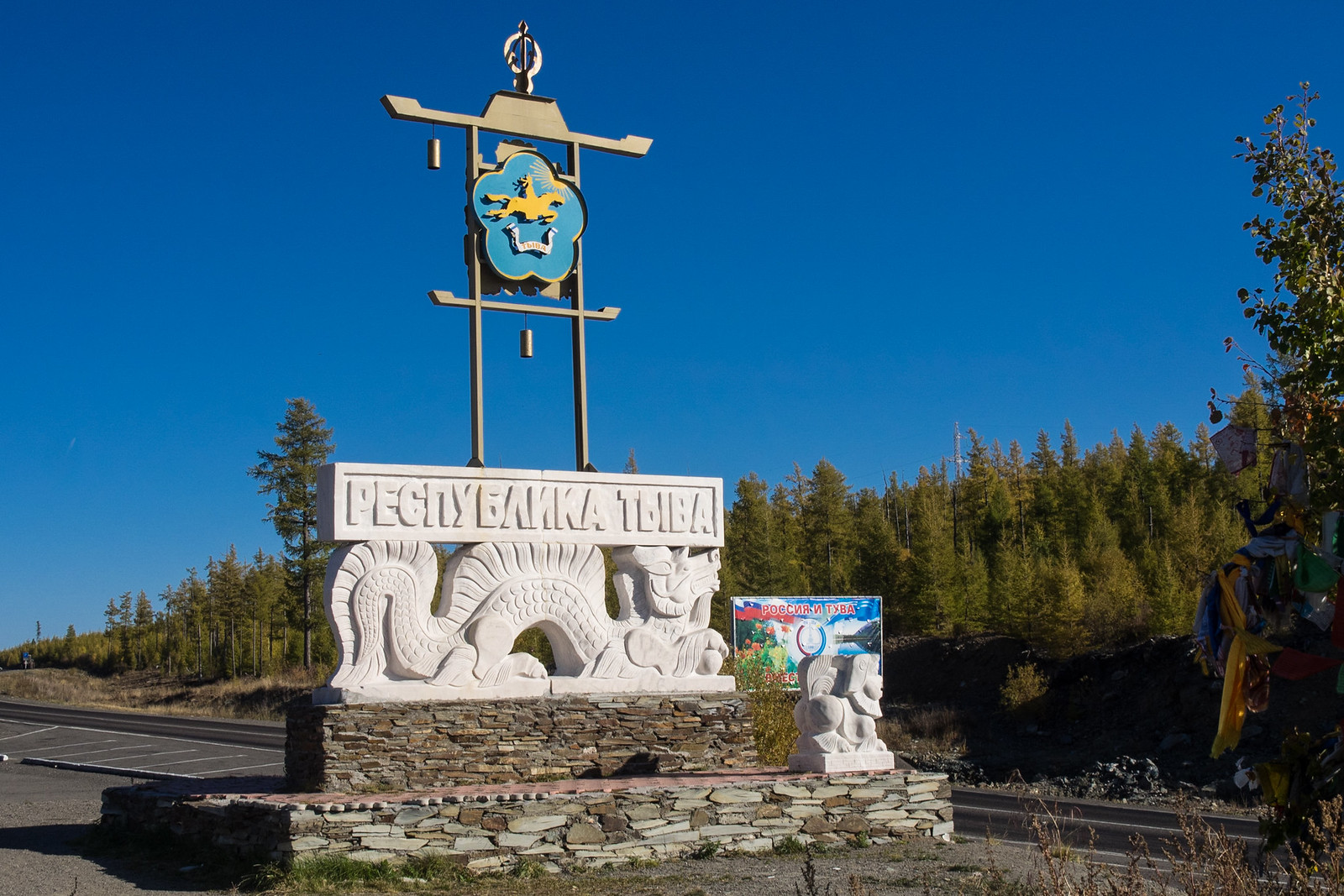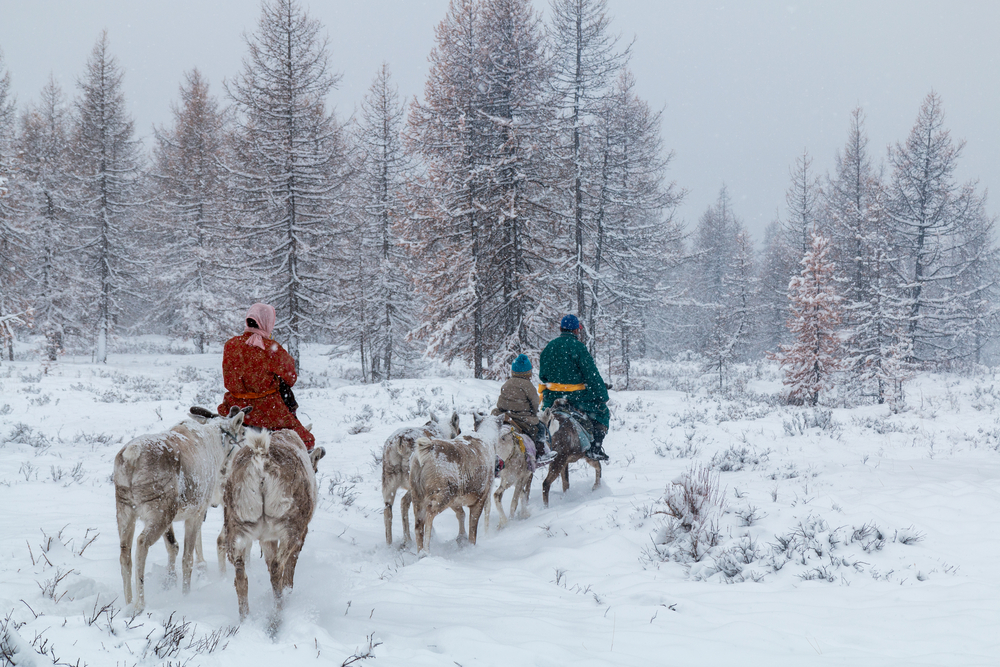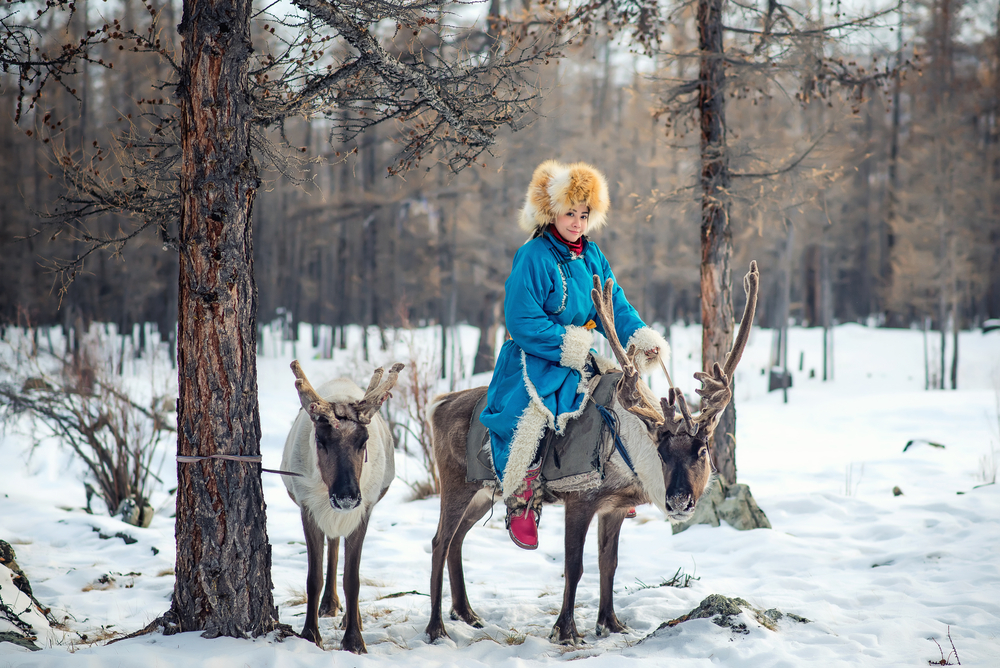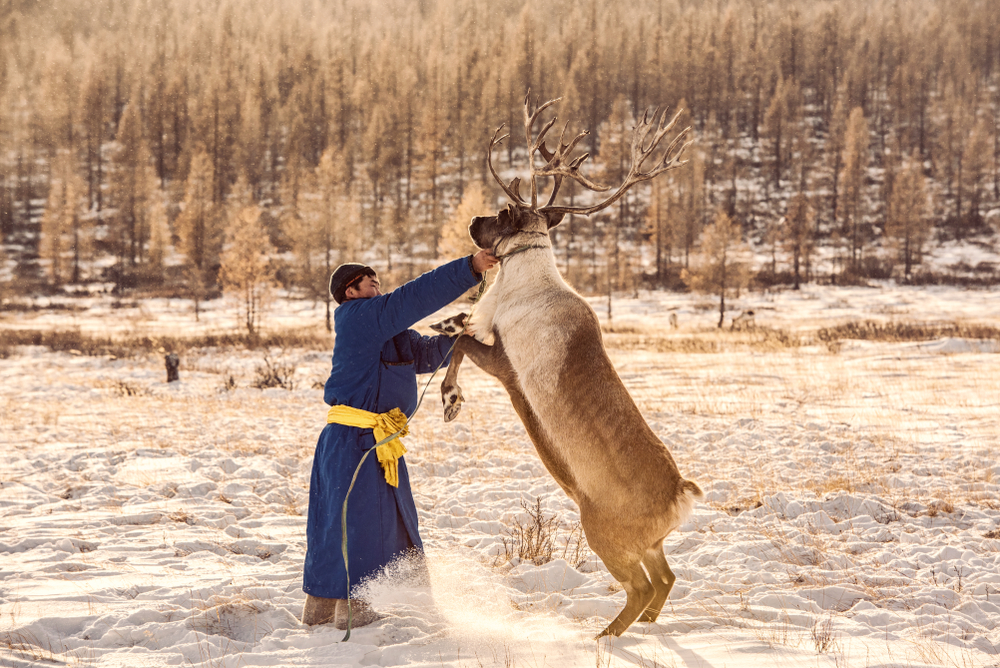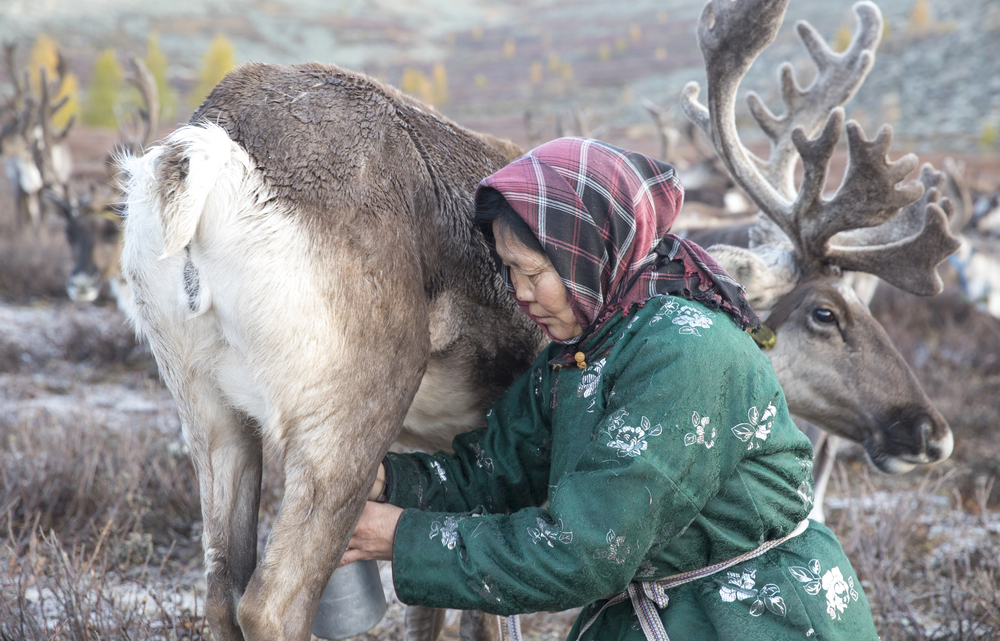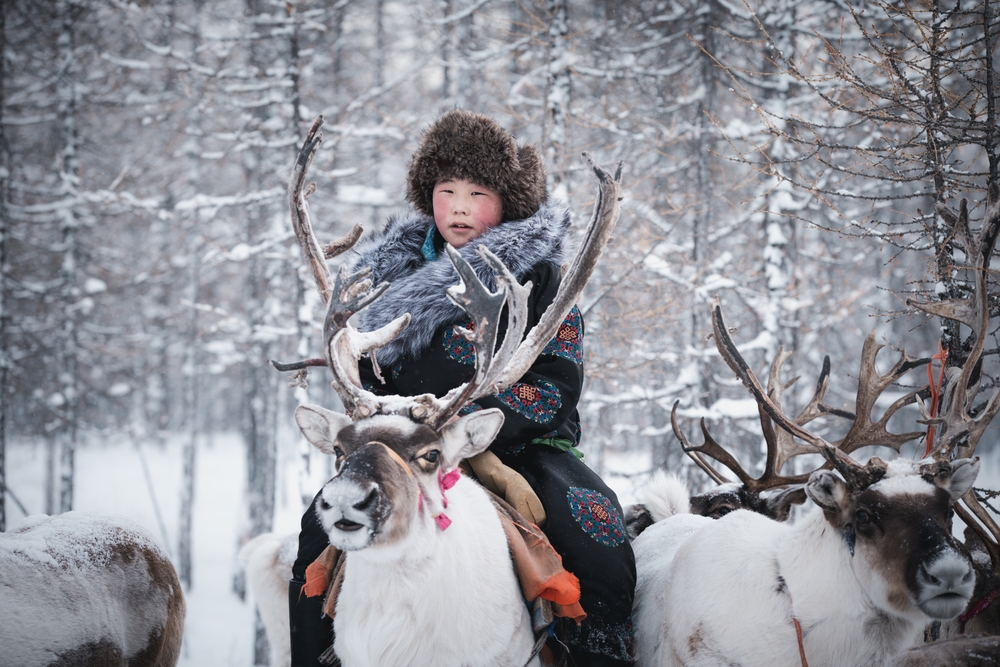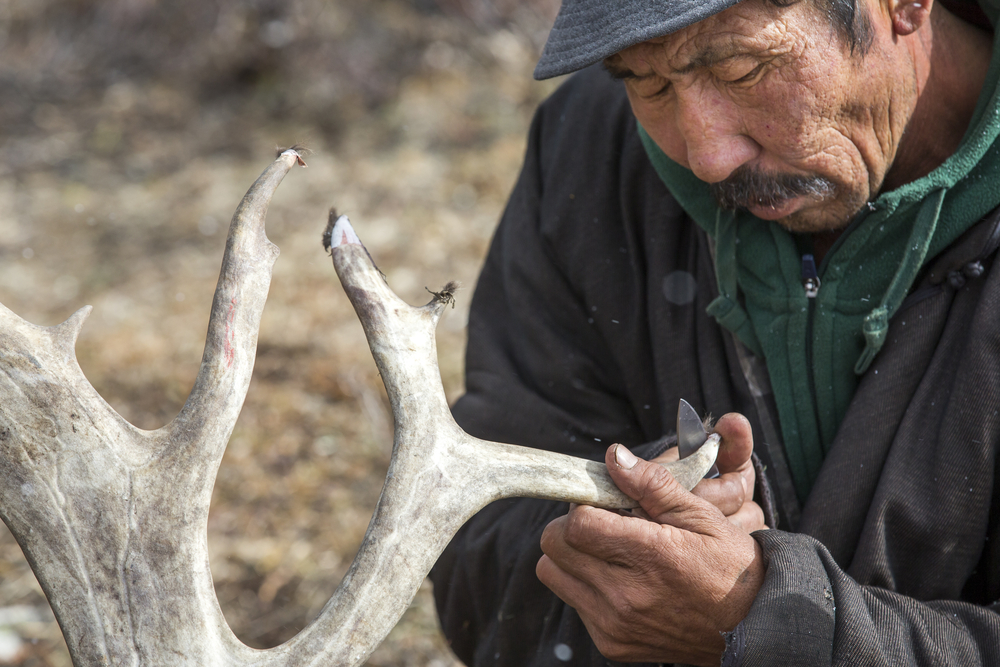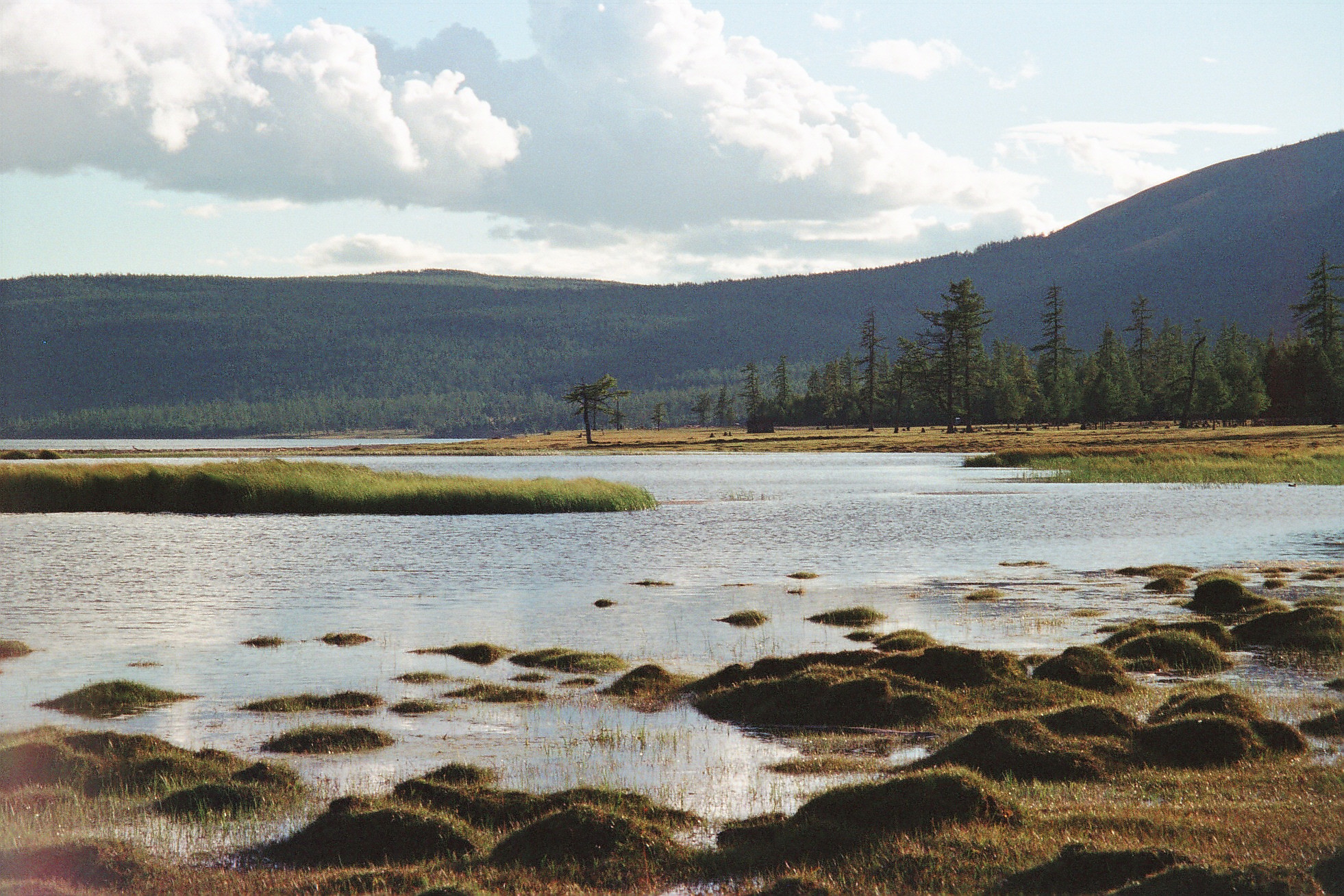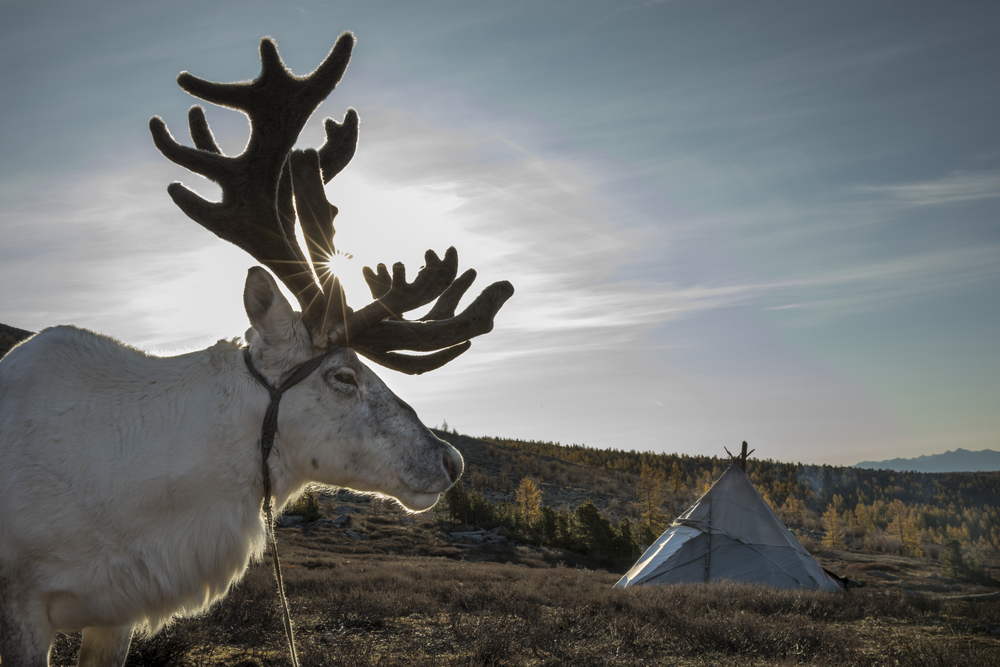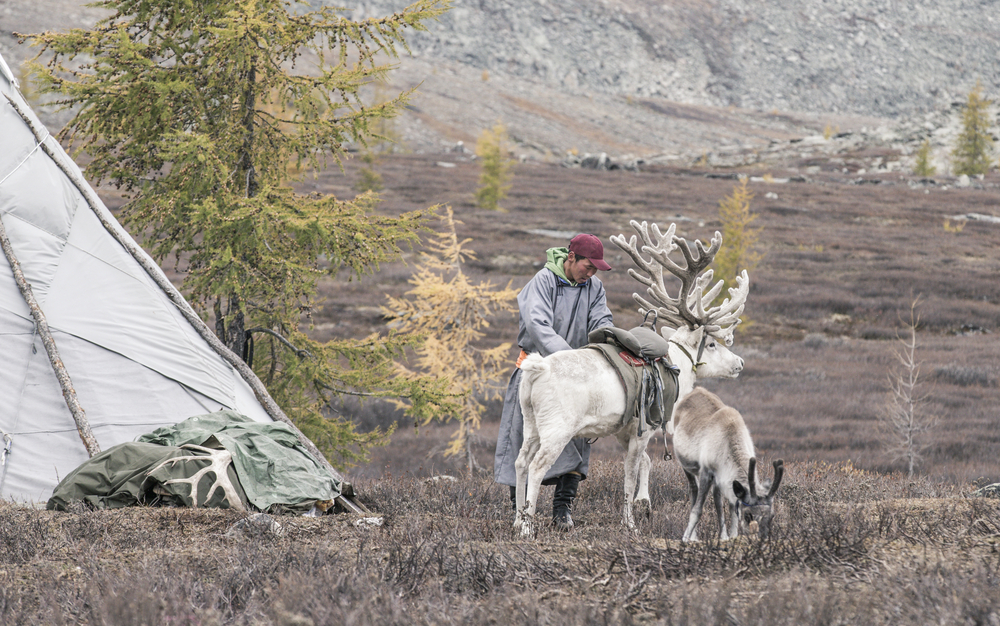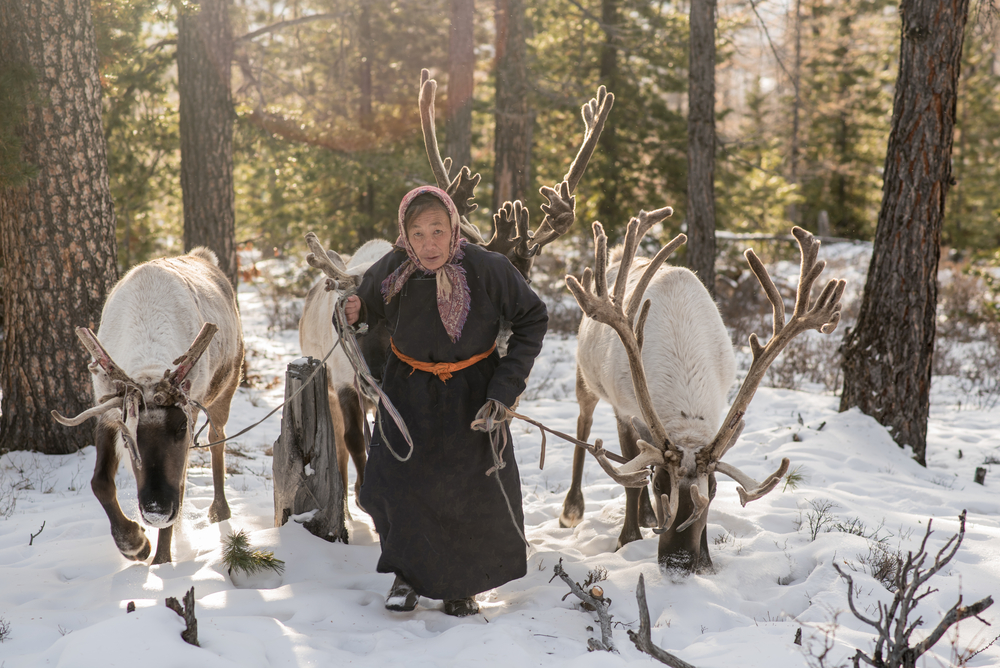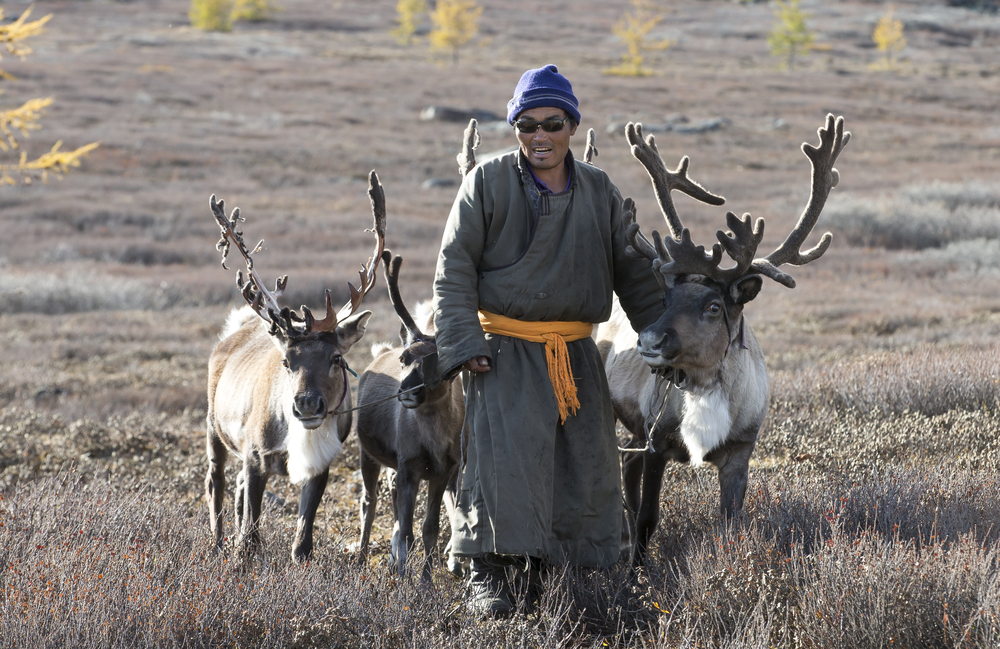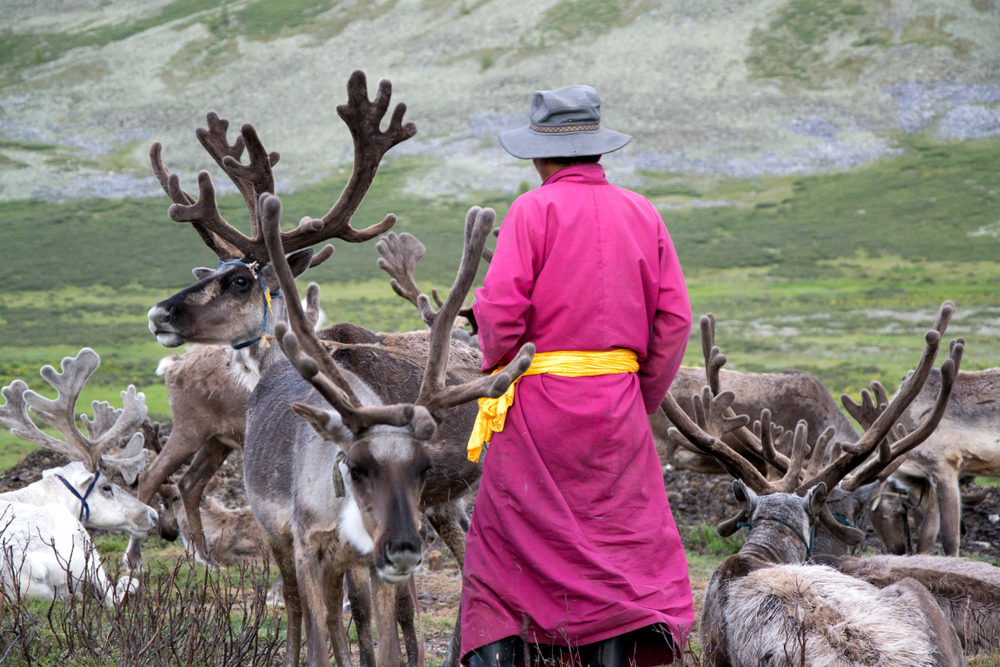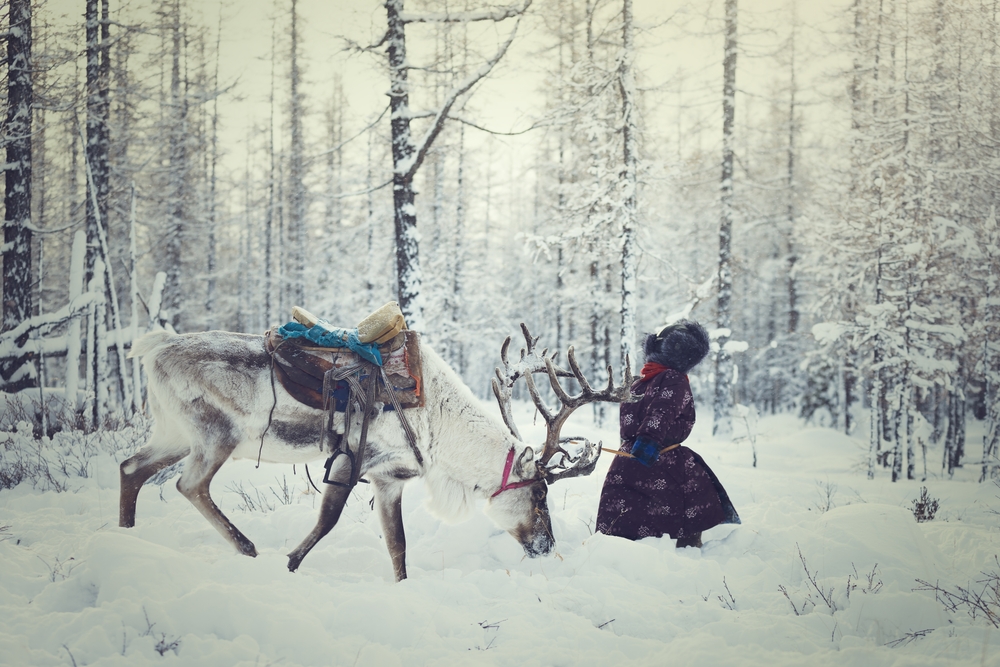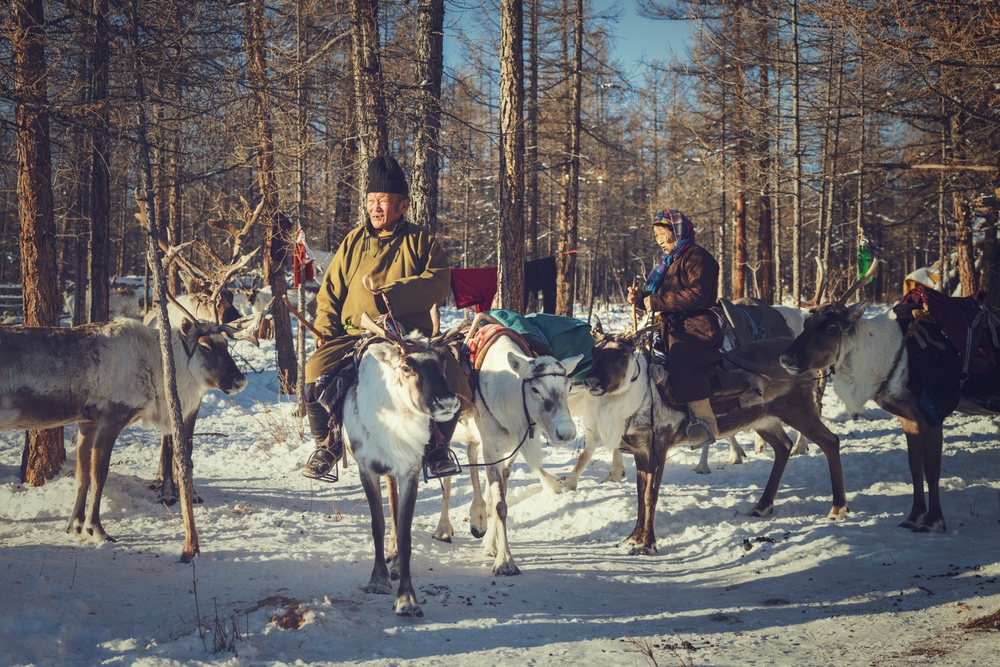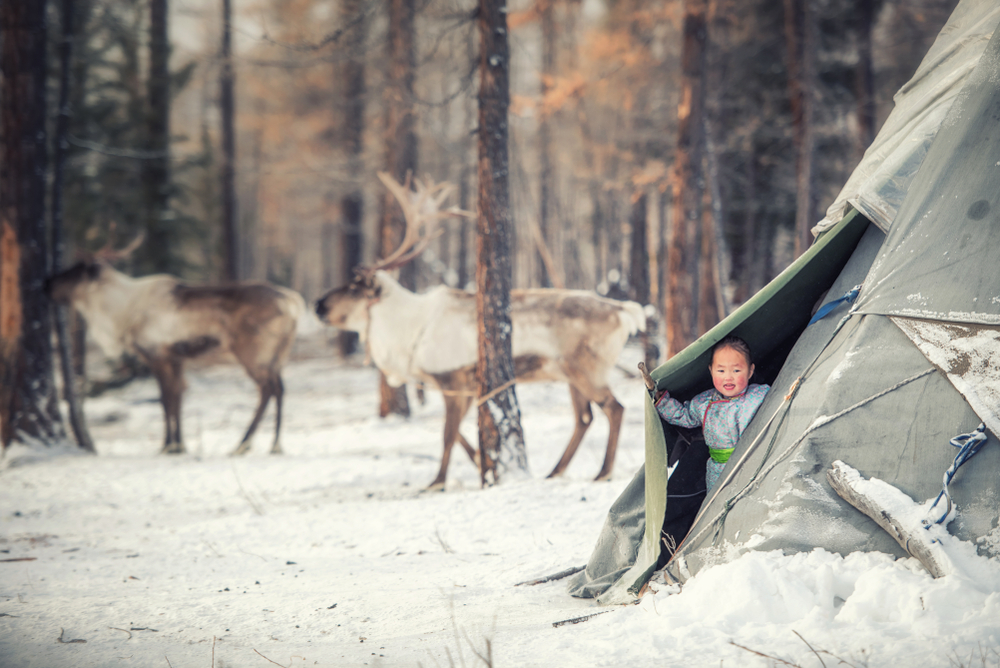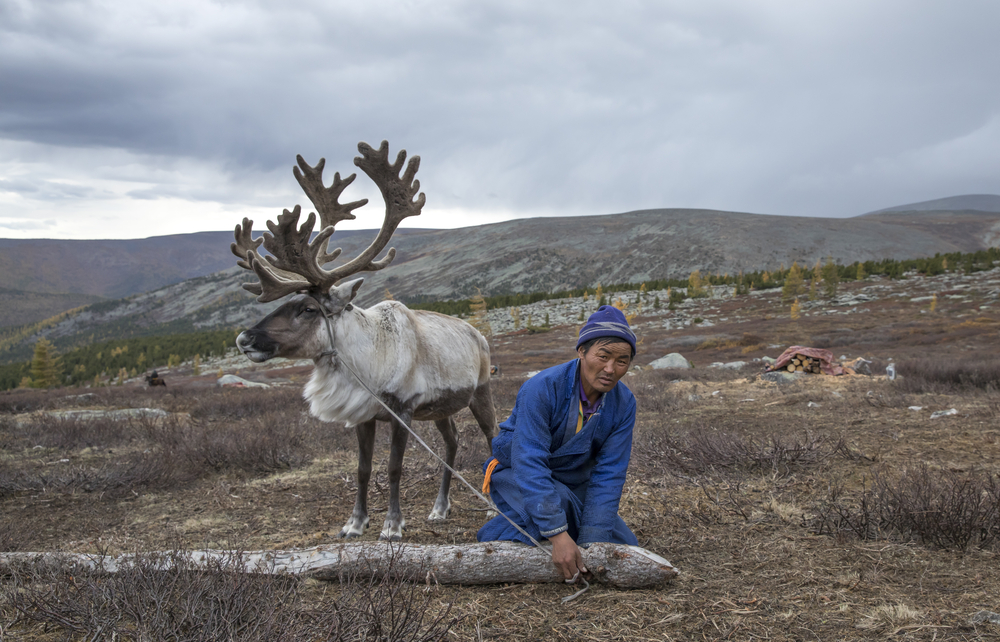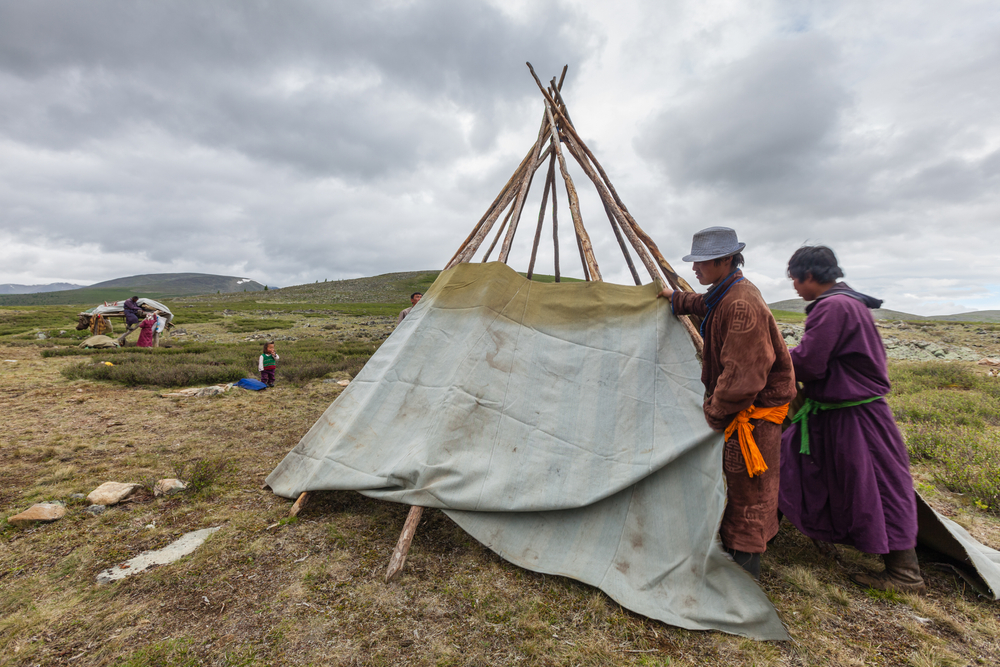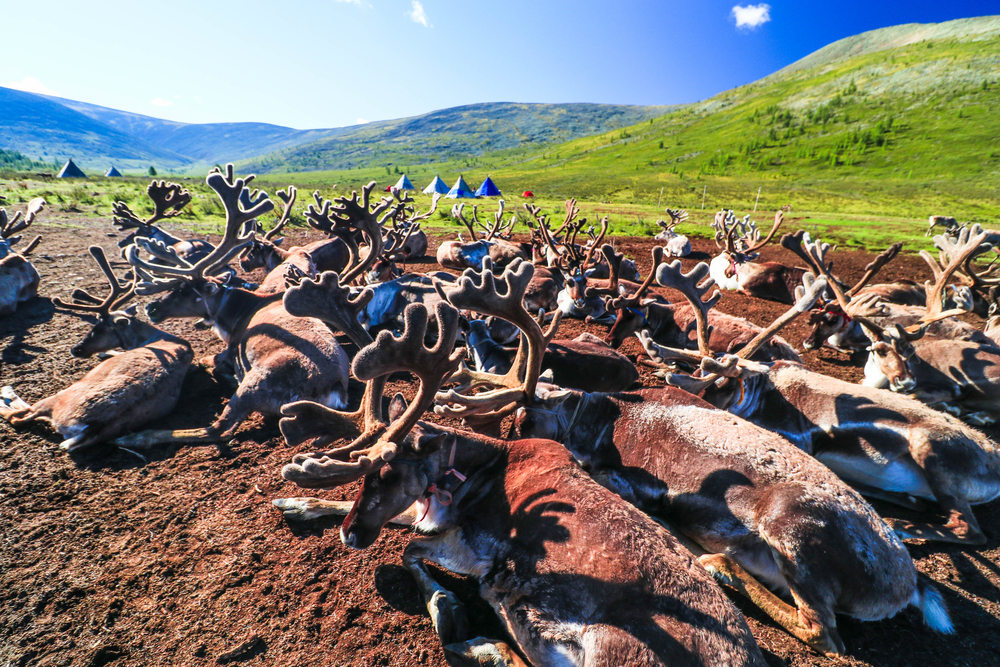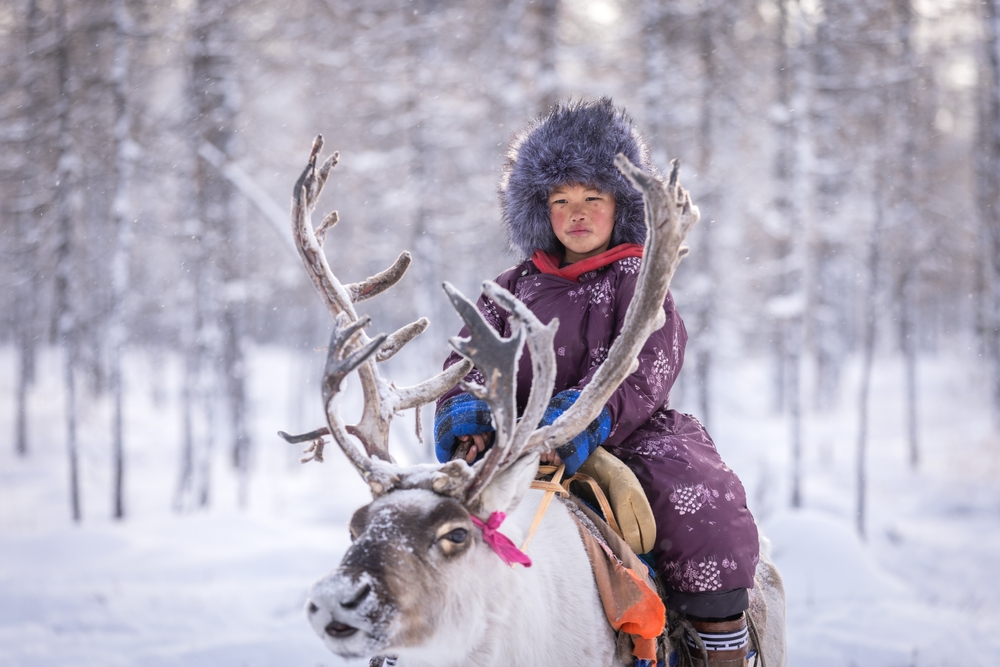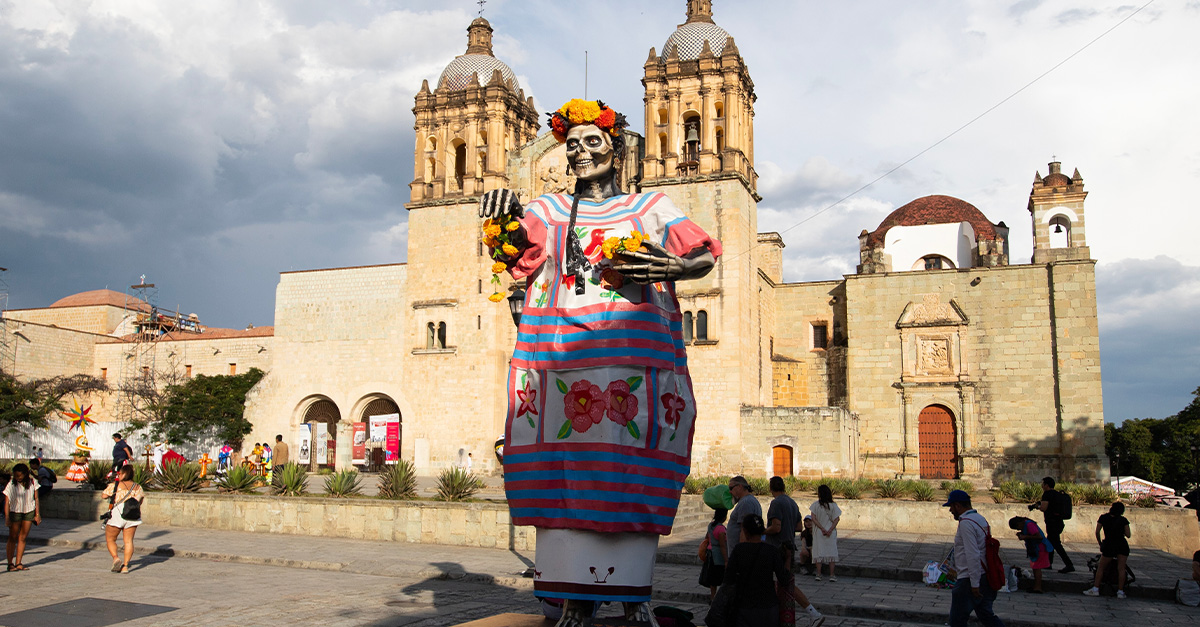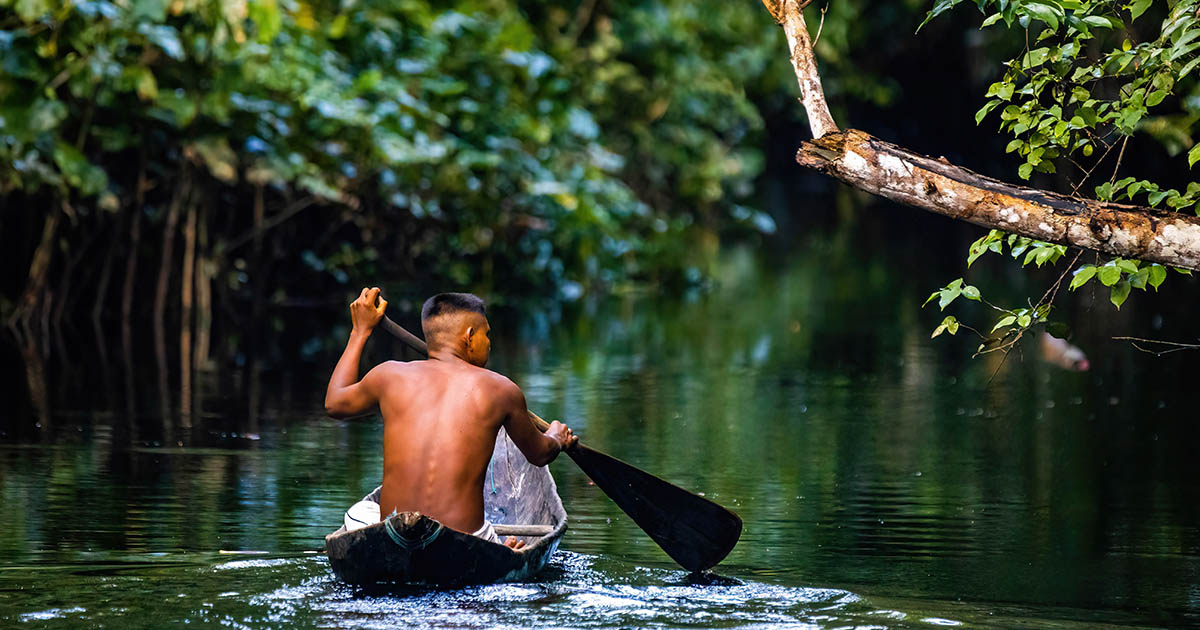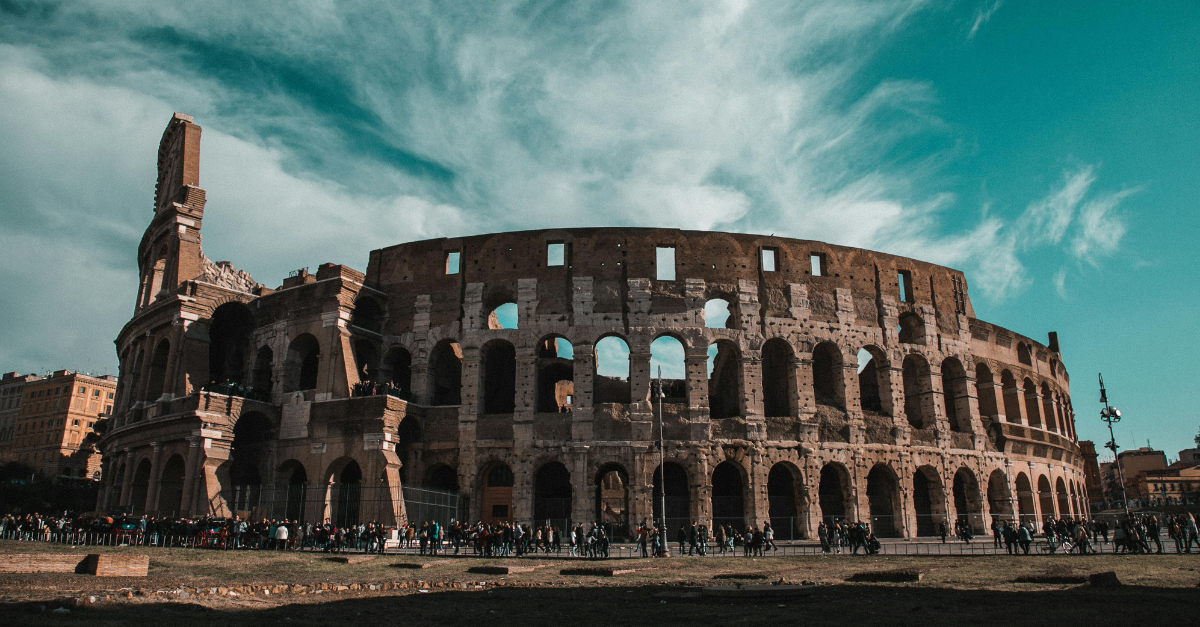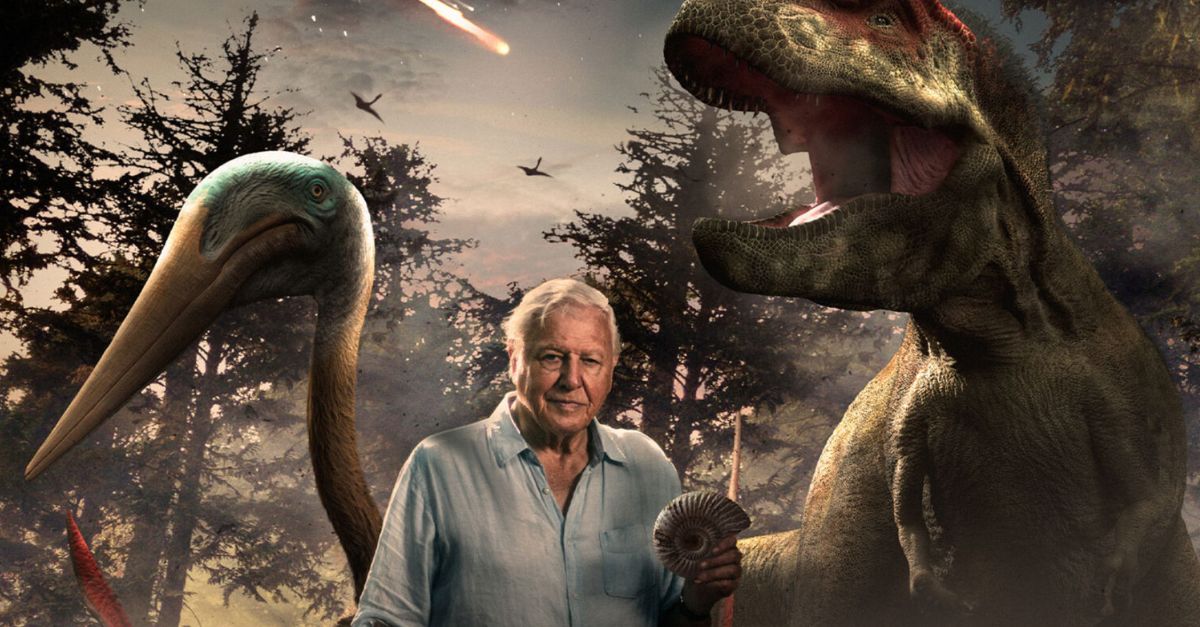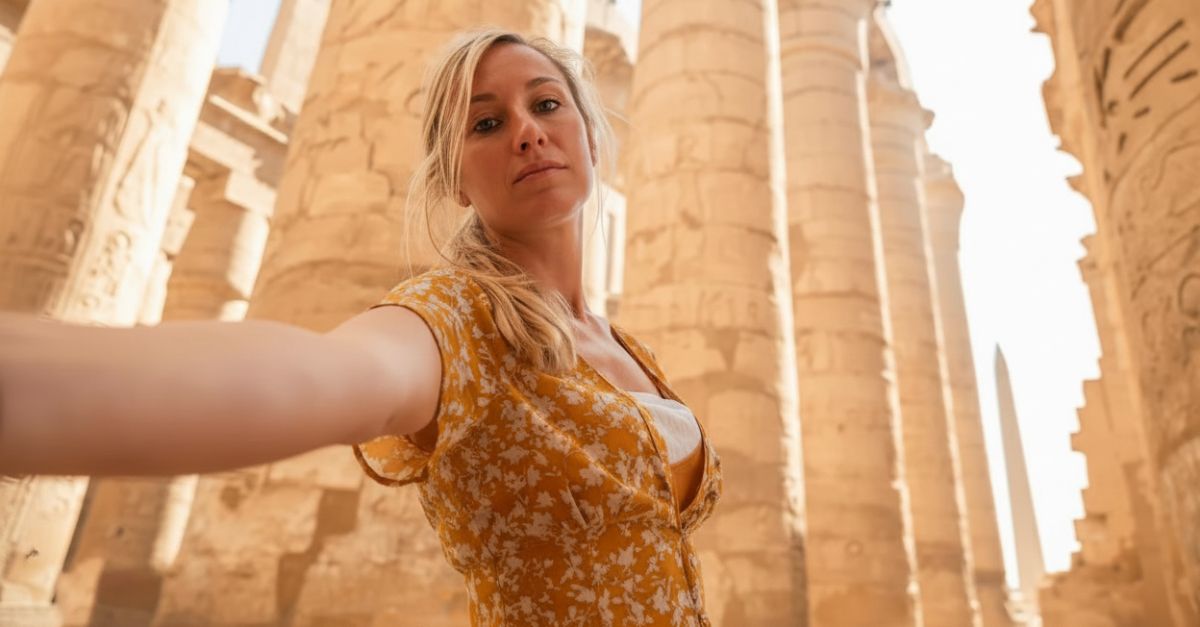Meet The Dukha People
Hidden in the frozen wastes of northern Mongolia are where you'll find one of the world's most elusive tribes: The Dukha.
The Dukha are the last of the country's reindeer herders, and they've spent centuries protecting their unique way of life.
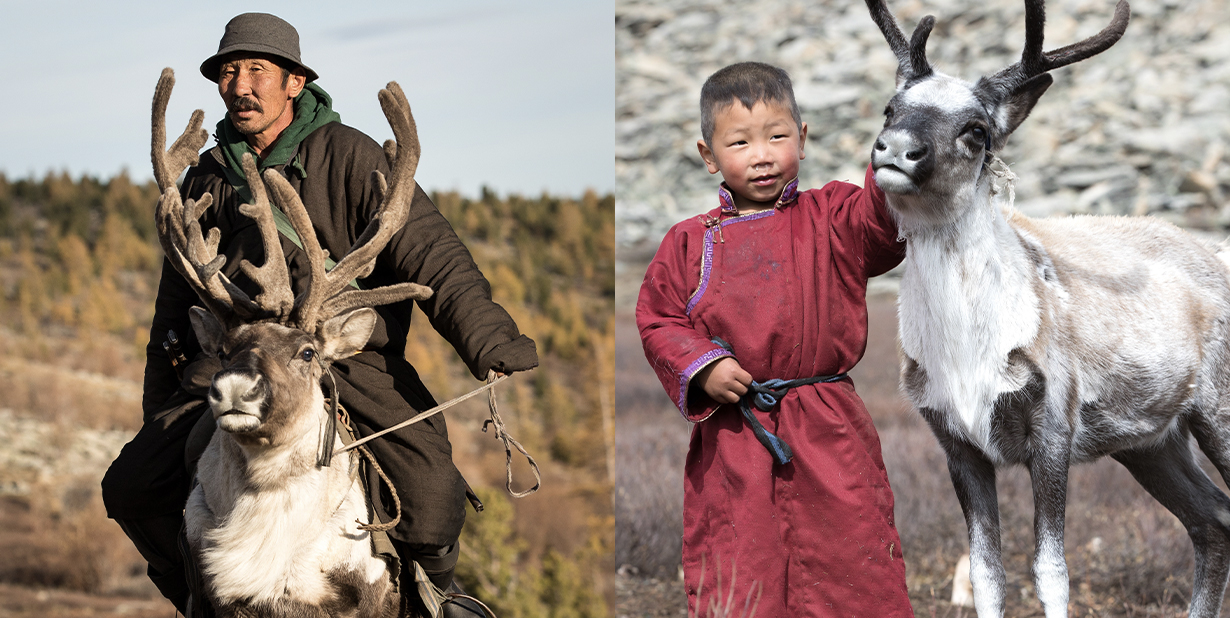
Where Do They Live?
The Dukha live north of Lake Khövsgöl in the Khövsgöl province of Mongolia. This is the northernmost part of the country.
How Big Is Their Community?
The Dukha are a small semi-nomadic tribe of reindeer herders. There are only about 40 Dukha families in Mongolia, equaling a total population of 500 people.
Another Name
The Duka are also known by another name: Tsaatan. In the Mongolian language, Tsaatan means "people who have reindeer".
Dukha means "reindeer herders", and they are often called "reindeer people" for their close connection with the animals.
Their Reindeer
The Dukha are the last reindeer herders in Mongolia. They live side-by-side with their reindeer and have a herd about 1,000 animals between all the families.
What Language Do They Speak?
The Dukha speak a Turkic language, which is similar to Mongolian. Their language seems to have originated from the Tuvan language, which is found in parts of China and Mongolia.
The 500 members of the Dukha community are the only ones who speak their language.
Where Did They Come From?
The Dukha came from what we now call the Tuva Republic of Russia, which is in the southern part of Siberia.
In 1921, Tuva gained it independence, and the Dukha were free to roam freely across the Tuva-Mongolia border…until the Soviet Union came knocking.
Life Under The Soviets
In 1944, Tuva was annexed to the Soviet Union. This was a problem for the Dukha since the Soviets were embroiled in WWII.
When they started taking the Dukha's reindeer to use for meat during food shortages, the Dukha knew it was time to leave Tuva.
A New Home
The Dukha had good trading relations the Mongolian tribes living on the steppes. They made a new home in the north of Mongolia and were granted Mongolian citizenship in 1956.
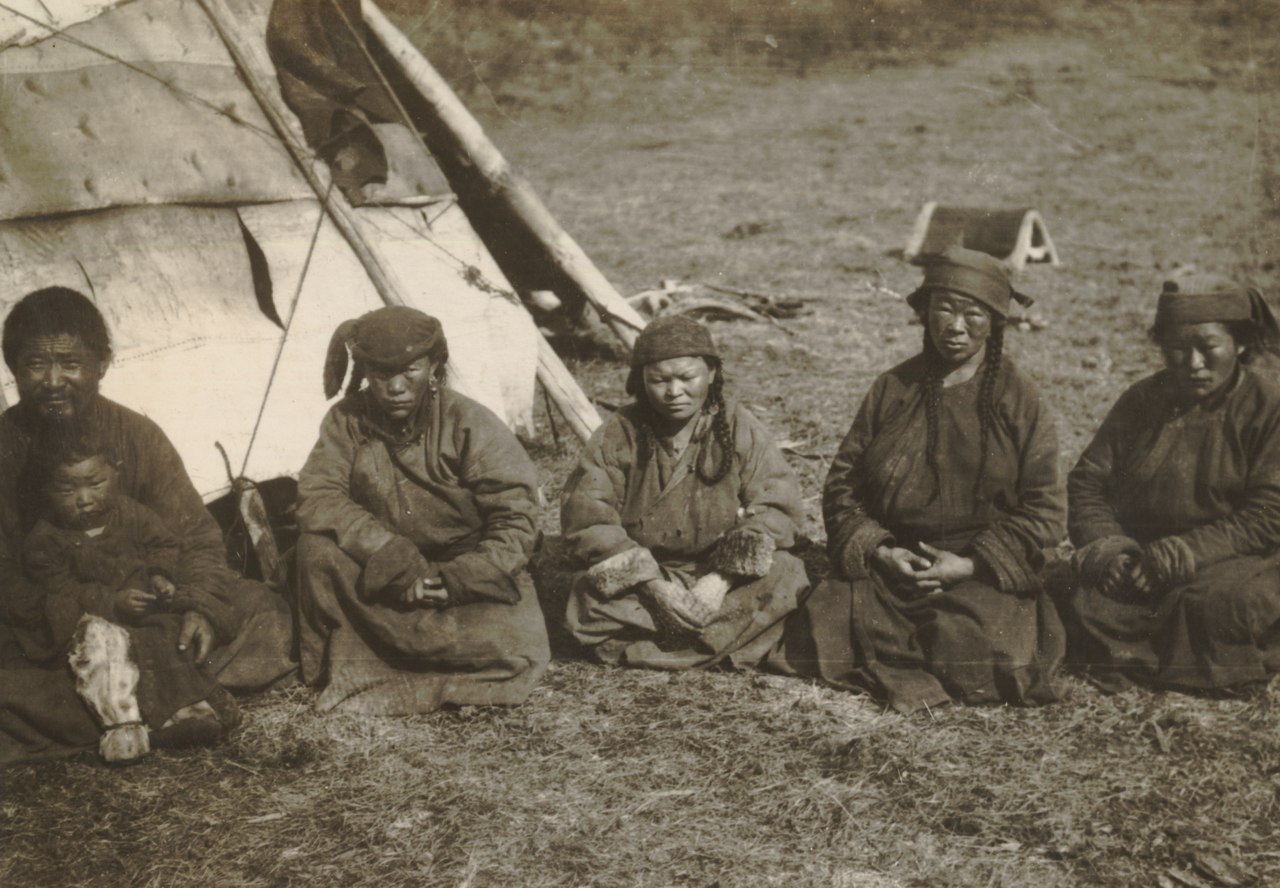 Unknown Author, CC BY 4.0, Wikimedia Commons
Unknown Author, CC BY 4.0, Wikimedia Commons
Their Reindeer
Reindeer are at the heart of life for the Dukha. They rely on the animals for survival, believe that if the reindeer ever die out, so will their community.
Their Reindeer (cont'd)
The Dukha's reindeer are fully domesticated and are often treated like family members. Much of their daily life is structured around taking care of the reindeer.
What Do They Eat?
The Dukha rely on their reindeer for food, but they rarely kill the animals for their meat. They use reindeer milk to make cheese and yogurt.
They also make a unique reindeer milk tea, that helps them stay warm during cold winters on the Mongolian steppes. For meat, the Dukha prefer to hunt wild animals.
Reindeer Rides
Many people may think reindeer are too small, but the Dukha have mastered the art.
Male reindeer are used for riding and getting the Dukha through the hills and forests of the Khövsgöl province. The reindeer are also used as pack animals, but never for pulling sleds.
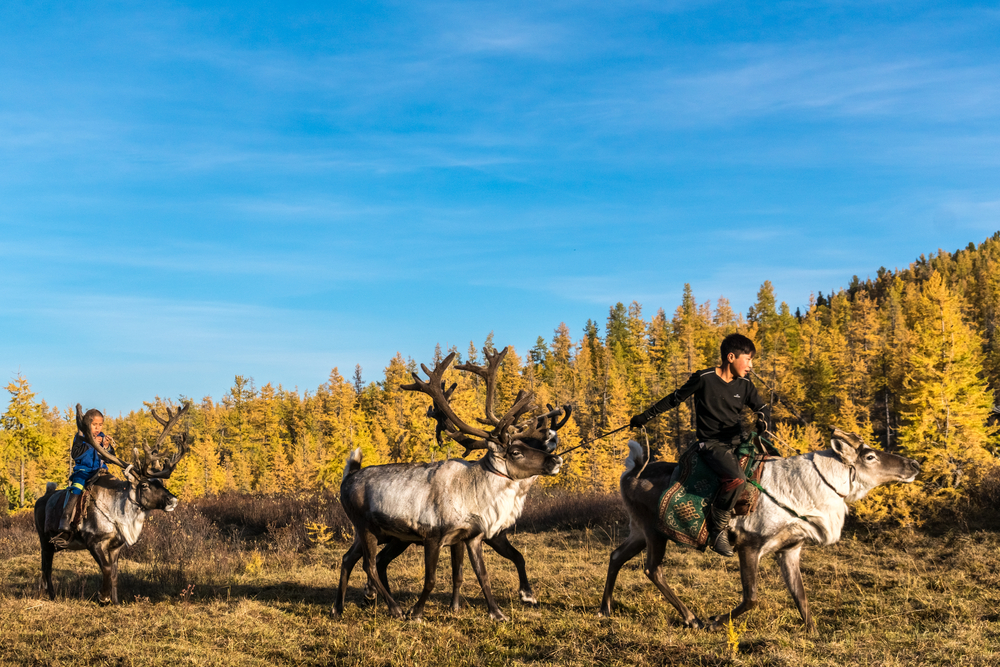 Tilpunov Mikhail, Shutterstock
Tilpunov Mikhail, Shutterstock
Training The Reindeer
The Dukha start training the reindeer to carry riders when the animals are two years old. At this age, they're too small to carry adults, so children train them.
Once the reindeer pass three years old, they can carry adults.
Reindeer Medicine
The Dukha use reindeer horns as part of traditional Chinese medicine. They carefully cut the antlers and can sell or trade them for supplies.
Life As Nomads
The Dukha are semi-nomadic, and move according to the seasons. In the wintertime, they stay in the forest, where the trees protect them from harsh winds.
They will often move several times during the winter, to avoid wolves and find moss that they can eat.
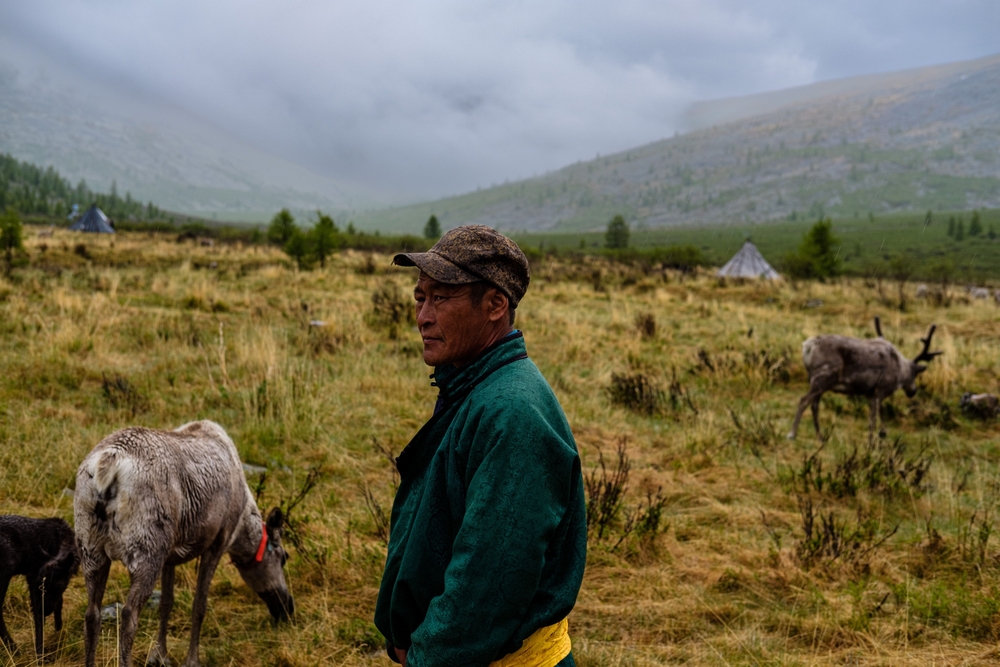 Wirestock Creators, Shutterstock
Wirestock Creators, Shutterstock
Life As Nomads (cont'd)
During the summer, the Dukha live on the open grasslands of the steppes. Camping at an altitude of up to 2,300 meters, the area has lots of fresh breeze, which keeps the reindeer from overheating.
Reindeer Pelts
While the Dukha rarely kill their reindeer, a few of the animals must be slain each year so the tribe can be sure they have enough pelts and meat to survive winter.
Reindeer pelts are used to make warm winter coats and shoes, as well as bags and mats to carry supplies while traveling.
Waste Nothing
When the Dukha harvest a reindeer, they use every part of the animal to make clothes or for meat. The only part they leave behind is the bile.
Division Of Labor
In Dukha communities, everyone helps take care of the reindeer. Women and girls milk the reindeer and make the yogurt, cheese, and milk tea.
Everyone, including elders, helps with herding, though during the winter, a few men stay with herd as they roam the forests.
Their Spiritual Beliefs
The Dukha practice shamanism and a form of ancestor worship. They believe that the ghosts of the ancestors live in the forest, and they help guide the Dukha to live good lives.
Their Spiritual Beliefs (cont'd)
While shamanism is practiced by many communities in the Mongolian steppes, the Dukha practice a different form of shamanism.
In addition to rituals, their shamans have many sacred books that offer wisdom on various aspects of life, like hunting or banishing rain.
Dukha Shamans
The Dukha shamans are called "boo". The shamanic beliefs among the Dukha are thought to be some of the oldest traditions among Turkic and Mongolian nomads.
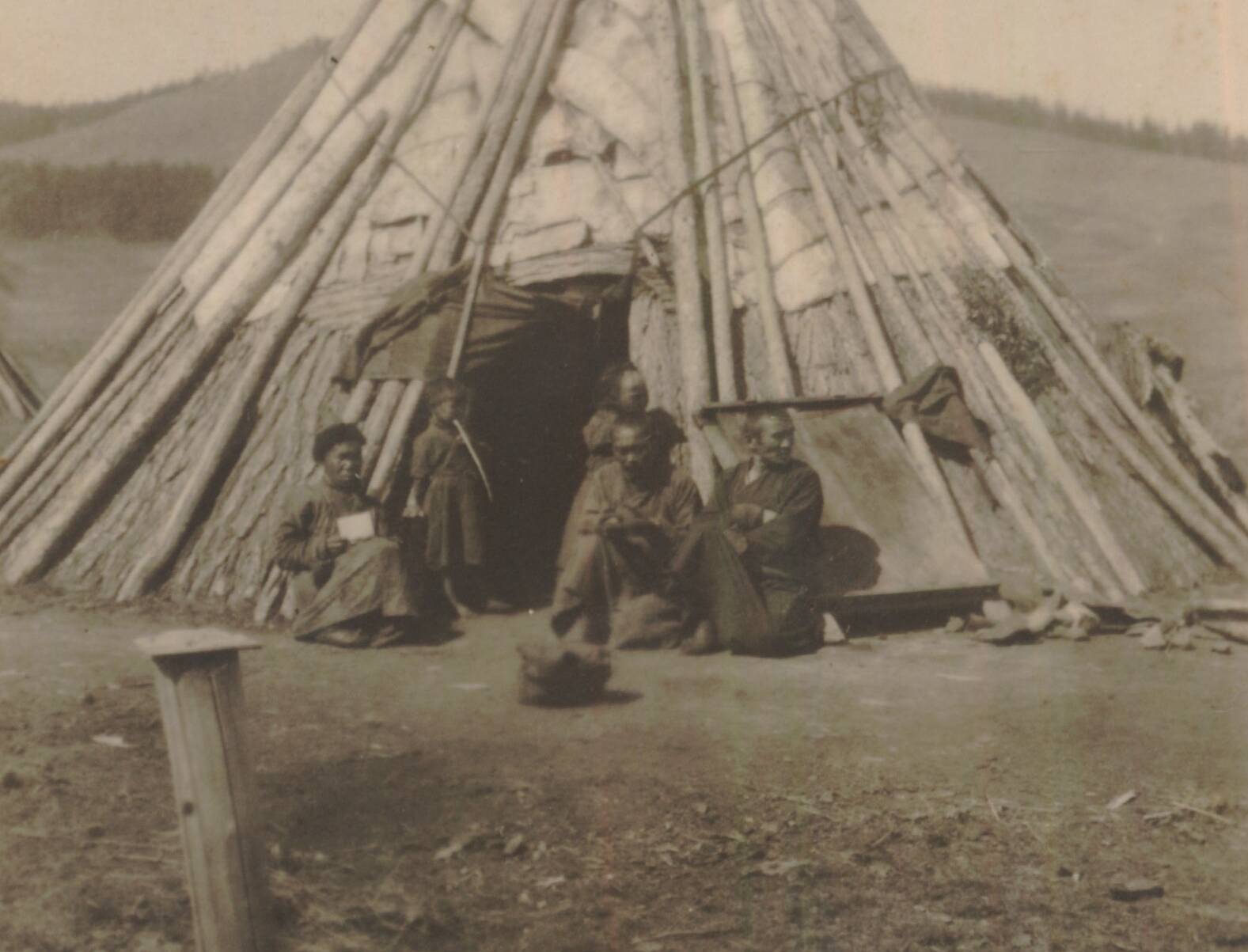 Unknown Author, CC BY 4.0, Wikimedia Commons
Unknown Author, CC BY 4.0, Wikimedia Commons
What Do They Wear?
To stay warm during the winter, the Dukha wear traditional Mongolian overcoats called "deels". These are very big and made of reindeer hide.
They also make boots from the skin of reindeer shins. These boots are waterproof and keep the Dukha's feet warm and dry in heavy snows.
Their Homes
The Dukha live in yurts that are called "ortz". They are typically made from birch bark and look like tepees. One yurt can use bark from up to 30 trees.
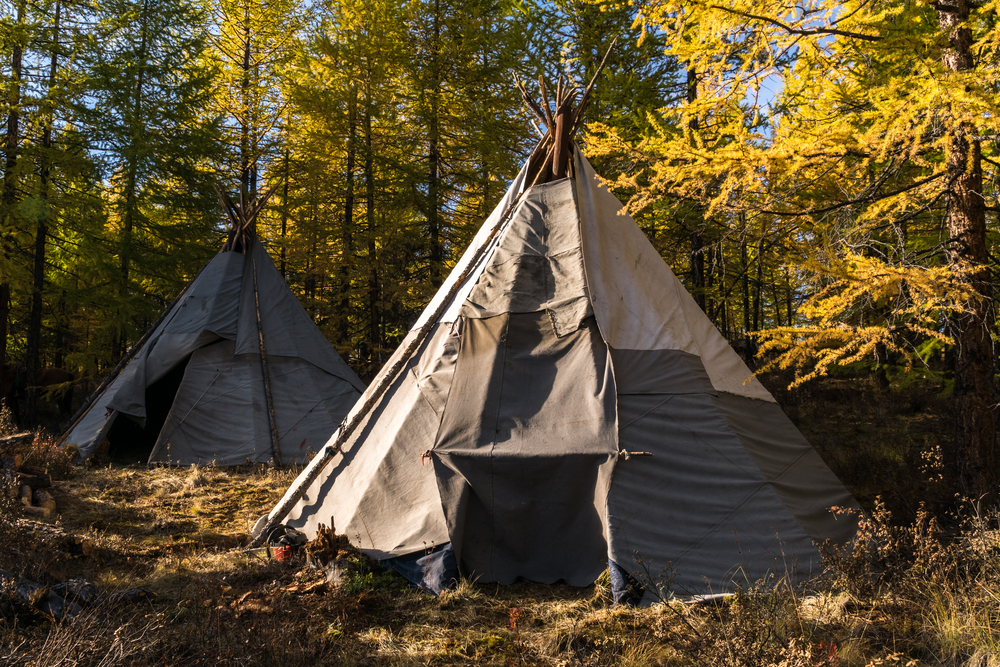 Tilpunov Mikhail, Shutterstock
Tilpunov Mikhail, Shutterstock
Threats To Their Way Of Life
In the modern age, climate change has become the main threat to the Dukha community's survival.
Climate change has impacted the growth of lichen, which is the main food source for the Dukha's reindeer. Because of this loss of food, there has been a significant decline in the population of their herd.
Threats To Their Way Of Life (cont'd)
Because the Dukha live in such an isolated area, it's hard for their reindeer to get veterinary care. This has also shrunk the size of their herds as it's difficult for them to get medicine to cure diseases that may be transmissible among the reindeer.
Threats To Their Way Of Life (cont'd)
Outsiders also pose a threat to the Dukha. In recent years, there has been a rise of gold mining in the Khövsgöl province, which threatens to encroach on the Dukha's territory.
The Mongolian government has also taken valuable hunting land from the Dukha, claiming it as part of protected national parkland.
Tourism
Money from tourism is one way that the Dukha make money nowadays. Since their homeland is so remote, most tours are run by members of the community who have the skills to safely guide tourists to the isolated Dukha villages.
Tourism (cont'd)
Tours to see Dukha villages are often called "Reindeer tribe tours". Mid-June to late August is the best time to visit since the tours only operate during the summer and flights to Mongolia are cheaper at this time.
Final Thoughts
The Dukha have managed to hold onto their way of life for centuries, but as the modern world comes knocking, they find themselves facing new challenges.
Hopefully, as tourists remain captivated by these incredible "reindeer people", the world will also support the steps necessary to protect the Dukha's homeland and ensure their survival for years to come.

